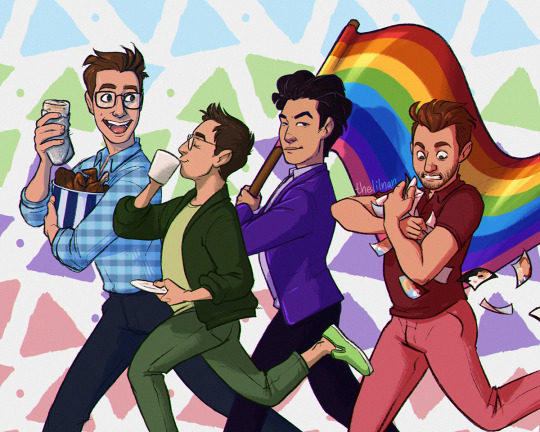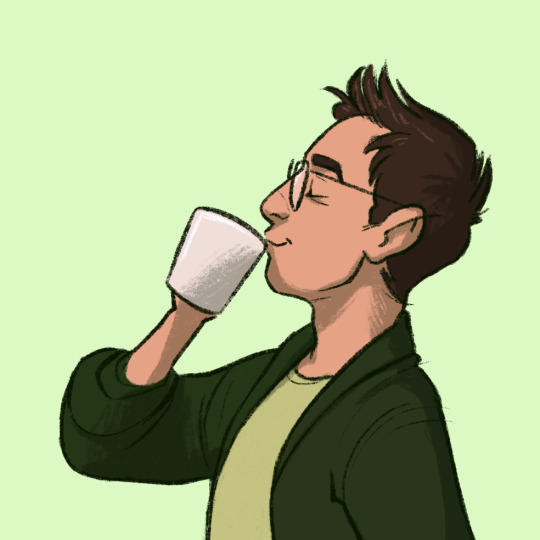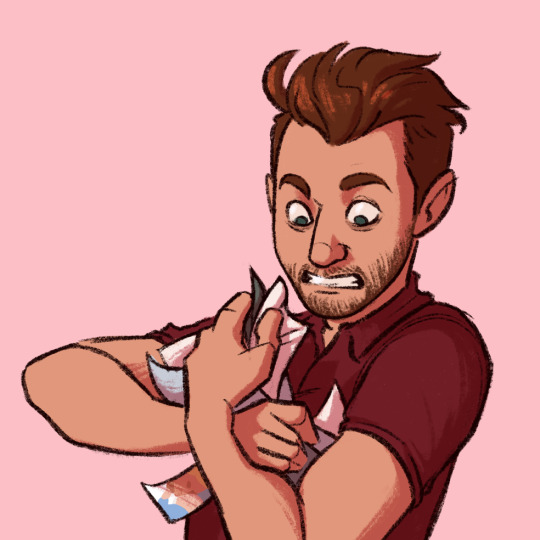Queer Studies 304 Week 4 Digital Scrapbook by Lisette Garcia
Don't wanna be here? Send us removal request.
Text
Week 4: Essence of the Musical
Examples of Queered Musical in Modern Pop Culture
Examples of the “Queer Spirit of the Musical”
Built off Understanding From “Hedwig and the Angry Inch” Directed by John Cameron Mitchell, and Four Assigned Readings
3 notes
·
View notes
Text
Choices of Queer Representation Themes
New Paradigms of Desire
Consumption Practices of Queer Texts
Validation of Queer Lifestyles via Media Portrayal
Construction of Sexual Identities - Commodified or Authentic - via Pop Culture Inclusion.
0 notes
Text
Four Assigned Readings
“The Contradictions and Conventions of Hedwig And The Angry Inch” by Genevieve Koski, Noel Murray, Nathan Rabin, and Tasha Robinson
“Gender Bender: An Oral History of ‘Hedwig and the Angry Inch’” by Jennifer Wood
“Origin of Love Lyrics” by Stephen Trask
“Challenging Hollywood's identity crisis The star and creator of 'Hedwig' is a Hollywood rarity, a gay actor who not only admits it, but defiantly questions the status quo: [North Sports Final Edition]” by Mark Caro
0 notes
Text
Musical as a Queer Medium Today
The extravagant fashion and emotional choreography of “I’m Gay,” directed by Eugene Lee Yang, exemplifies how music and fashion can be utilized to express the unique experience and lifestyle of being queer. Performance and extravagant fashion implemented in LGBTQ+ media, such as the use of musical, embodies a specific aspect of being queer, which is being an outsider, who is either ostracized, misunderstood, or polarized by society. Whether it be through unique movements, or an elaborate outfit, both mediums serve to visually depict an individual as one who goes against the crowd.
Similarly can be said for the use of music and fashion in “Villain,” by Teniwoha, where music and fashion is utilized to dramatize, exaggerate, and bring alive the villain archetype associated with being queer, which highlights the unfair treatment queer individuals face from society.
“Both,” by Todrick Hall, integrates aspects of musical, such as music and extravagant wardrobe on his cover album, to depict the unique power queerness can possess, which is flexibility of experimentation with gender roles.
0 notes
Link
Yang, Eugene Lee. “I'm Gay.” Youtube, Try Guys, 15 June 2019, https://www.youtube.com/watch?v=qpipLfMiaYU
1 note
·
View note
Video
youtube
Yang, Eugene Lee. “Why I'm Coming Out as Gay.” YouTube, Try Guys, 17 June 2019, www.youtube.com/watch?v=QruHsyt8paY.
0 notes
Text
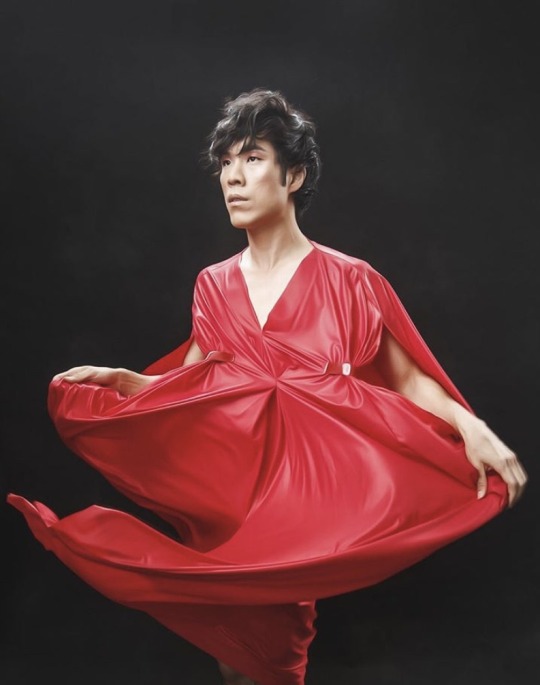
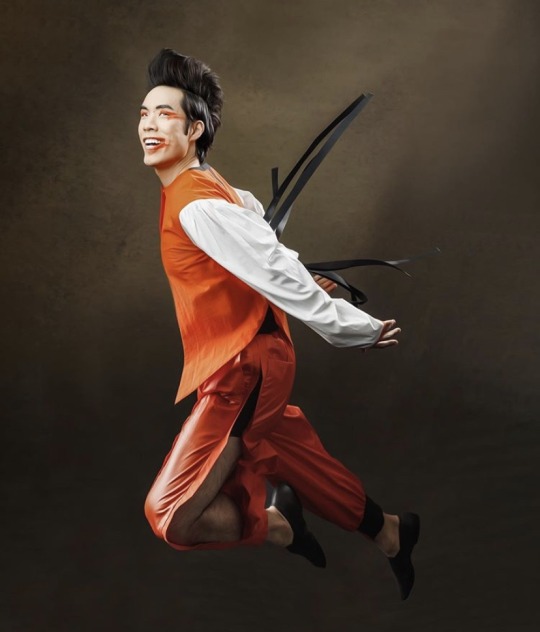
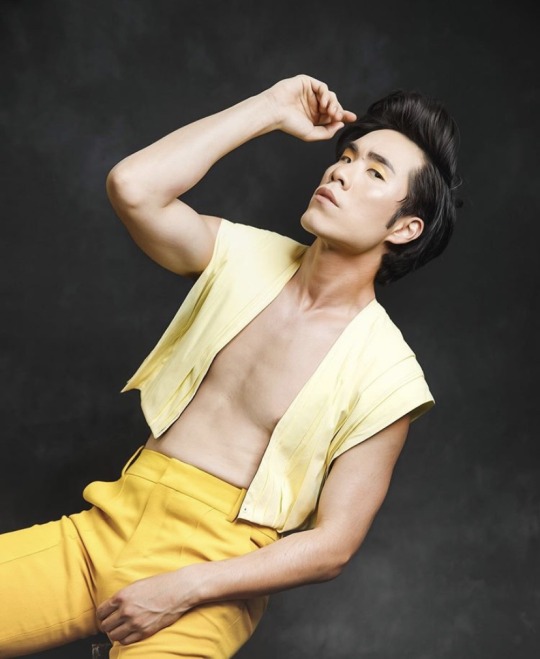
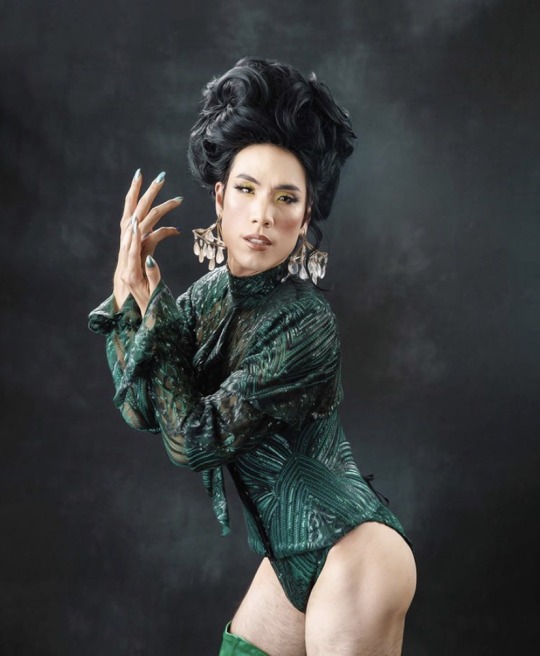
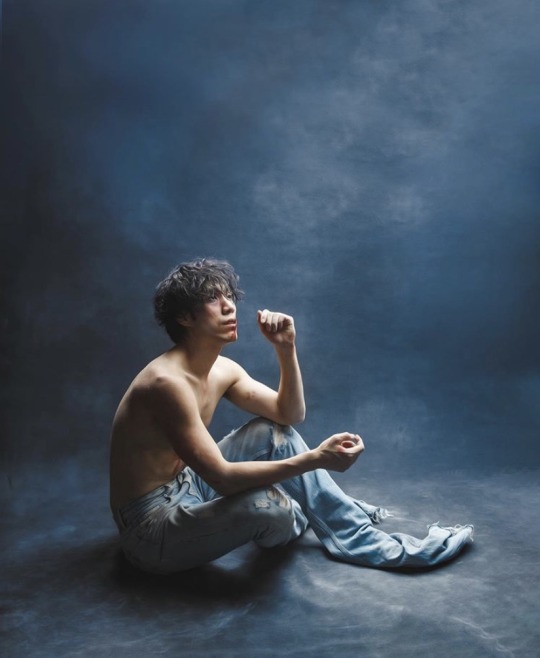
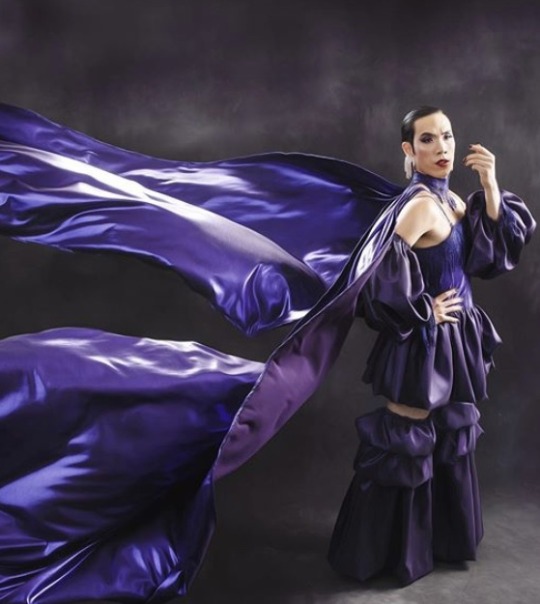
happy pride, from eugene lee yang 🌈
23K notes
·
View notes
Text


Our 16th queer, AAPI history maker is Eugene Lee Yang, a gay, South Korean-American filmmaker and internet celebrity.
22 notes
·
View notes
Text





Eugene’s Halloween costume 2018 from his Instagram “eugeneleeyang”
5K notes
·
View notes
Photo


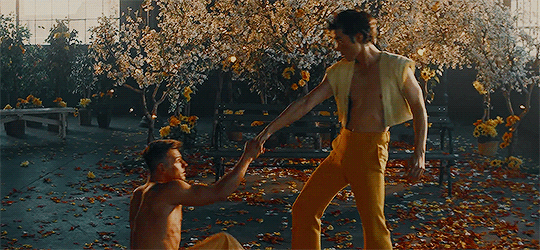
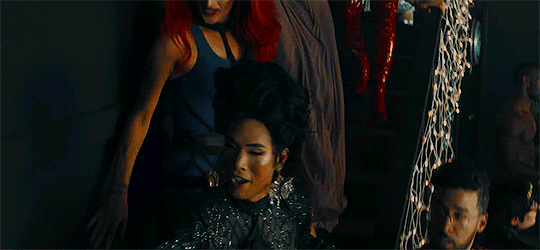
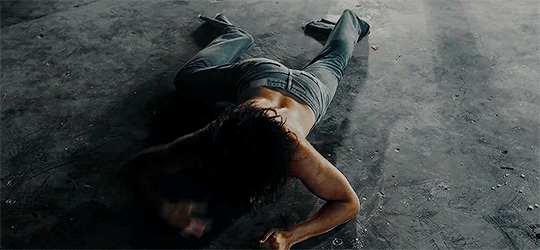
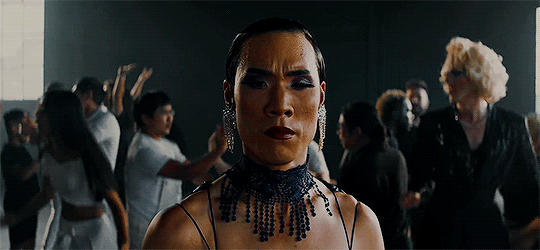
@creatorsofcolornet Event 3: Pride
Center your experience, honestly and uncompromisingly, on yourself. - Eugene Lee Yang
364 notes
·
View notes
Text
Coming Out - “I’m Gay“ Directed by Eugene Lee Yang
On June 15, 2019, during pride month, Eugene Lee Yang, one of the four members of the Try Guys, posted his coming out video. Eugene Lee Yang’s coming out video stands out from many other Youtuber’s coming out videos, as instead of explicitly telling the audience his sexuality, Eugene takes a performative cinematic approach to coming out on Youtube.
In his behind the scenes video, “Why I’m Coming Out as Gay,” Eugene Lee Yang describes the reasons many LGBTQ+ individuals decide to stay in the closet, and the added pressures of coming out as a public figure, when he states, “There's a lot of really personal reasons why I haven't explicitly come out. We hold things back because we're very scared that there's going to be repercussions. I'm not even really comfortable talking about it right now. But I think I'll be able to open up more about it later. But I just know that this is the time. I think sometimes you just know.” (Yang). Here Eugene Lee Yang shares his fears on how both the audience, and people in his personal life, will react to finding out his sexuality, when he further states, “I am afraid that some people I’m very close to will disown me and not talk to me anymore because of this video. Knowing that someone might be homophobic, and a couple of people could be, and that’s hard.” (Yang). This fear of repercussions, and how other’s will react to their sexuality, is what leads many LGBTQ+ individuals to stay in the closet in the first place.
Eugene Lee Yang wrote, directed, choreographed and starred in his own coming out video, “I’m Gay.” When describing his inspiration for the style of his coming out video, Yang states, “I have always thrived off of design, cinematography, dance, movement, and the emotional interpretation of an idea.” (Yang). Eugene Lee Yang had graduated from USC film school and directed numerous music videos and short films before he began his online career with the Try Guys. His coming out video, “I’m Gay,” perfectly embodies Yang’s distinct style of expressive cinematography. The video follows a color coded theme comprised of six distinct colors that represent stages of a queer person’s journey.
The Red Scene (NATURE):
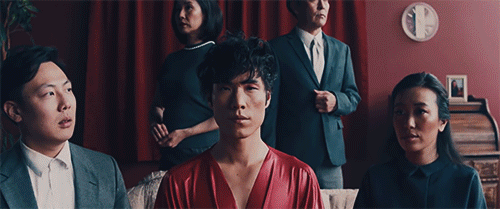
The Red scene depicts Eugene in a large ornate hall, styled in an all red androgynous outfit, seated in a frozen family portrait between his sister, brother, mother, and father, who are all dressed in grey. He and his siblings begin to play and dance in unison, mimicking the tough bravado of their father, and switching to mimic the feminine and graceful movements of their mother. As his brother gravitates towards following his father, and his sister gravitates towards following her mother, Eugene moves towards mimicking his mother and applying red lipstick to himself. His mother ends up ripping the lipstick out of Eugene’s hand, while his father smears lipstick across his face. Eugene’s siblings fall back in line to following their assigned peers and gender roles, while Eugene’s father yells and pushes him to submit into his assigned gender role under him.
The red scene represents innocence, and how we our all born with innate feelings of play, curiosity, and exploration. Eugene represents an unformed nongendered child in the opening, depicted by his androgynous clothes. The red scene also focuses on gender roles, and who we feel we are suppose to be in a structure, such as in a nuclear family. The end of the red scene represents a child being told they can’t behave a certain way in society, which deviates from their preassigned gender role.
The Orange Scene (NURTURE):
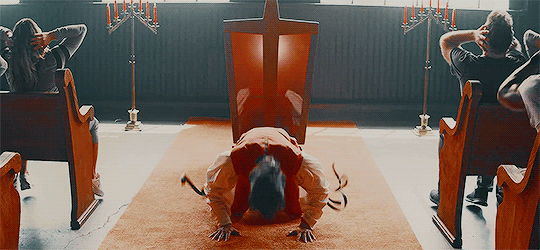
In the orange scene, Eugene is depicted in an orange outfit, lost amidst a large group of dancers all dressed in grey. The dancers move in unison, their movements representative of prominent social settings, such as school, church, and work. Eugene attempts to keep up with dancers and their controlled movements, but he finds himself increasingly bursting out of line with loud, joyous distracting movements. As the orange scene progresses, there are subtle shifts in the dancer’s wardrobe, with some of the dancer’s grey clothes changing to black, and some of the dancer’s clothes changing to white. At the end of the orange scene, half of the cast in black look at Eugene with adoration, while half of the cast in white sneer in disgust at him.
The orange scene represents how individuality can be shamed or villainized by others, where being different equates to being bad. It also represents conformity, and how individuals who are different are pressured by society to change in order to fit in. Those who refuse to conform to society, are ultimately ostracized or treated with polarizing responses.
The Yellow Scene (LOVE):
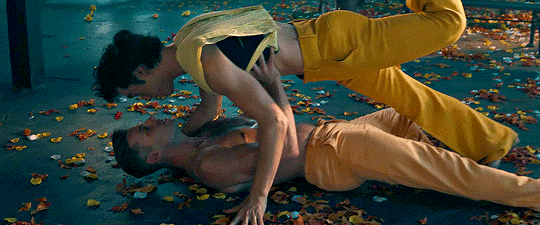
In the yellow scene, Eugene, now dressed in an all yellow outfit, dances formally with a girl who is dressed in black. While dancing, a boy, dressed in all yellow also, catches Eugene’s eye. The two men dance together with flirtatious and exploratory movements. Caught between two opposing forces in a three way dance with the girl and boy, Eugene eventually embraces the girl before running off with the boy.
The yellow scene represents first loves. The girl represents the true ally of the LGBTQ+ community, someone who was right next to Eugene through his journey of self discovery and coming out. The boy represents the first romantic love and first sexual love for a queer individual, and also the realization of being attracted to someone who we are told by society that we are not supposed to be attracted to. The end of the yellow scene represents the girl, or true ally, giving her blessing to Eugene, that it is okay for him to be who he is and go run off with the boy.
The Green Scene (COMMUNITY):
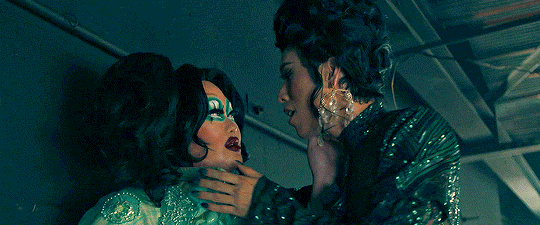
In the green scene, Eugene and the boy, both styled in green, are joined by a cast of LGBTQ+ people, dressed in rainbow colors. Similar to a club setting, they all dance and laugh together in unison, moving around one another with a manner of dignity and appreciation. The group joins together, mirroring the opening family portrait shot, appearing comfortable and happy. Suddenly, a group of dancers in white approach them. Eugene’s friends scatter, some unable to escape, and instead fall on the ground as if dead or apprehended. The green scene ends with Eugene being forcefully grabbed by a slew of white hands.
The green scene represents pride, community, and a safe place for the LGBTQ+ community.
The Blue Scene (HATE):
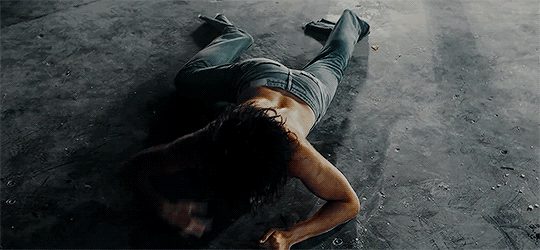
The blue scene begins with Eugene dressed in all blue, beaten ruthlessly by the horde of dancers in white. Eugene is left bruised and bleeding, with two black eyes and a bleeding lip. The dancers dash away, leaving Eugene crying and crawling across the ground. His family reappears, his mother and brother now dressed in black, and his father and sister now dressed in white. Eugene’s mother and brother try to help him up, but his father and sister push him back down again. His family dissolves into fighting one another, leaving Eugene on the ground. The blue scene ends with Eugene in his agony having a slow creeping resolution settle in his eyes, as he smears his own dark blood across his mouth, mirroring the lipstick in the opening red scene.
The blue scene represents the hardships that come with being LGBTQ+, such as violence, hate, and polarization between loved ones and family.
The Purple Scene (PRIDE):
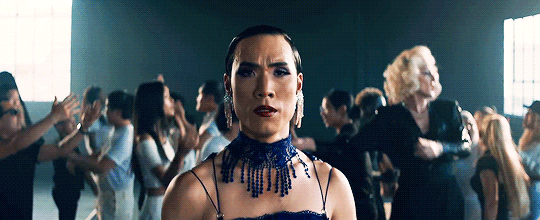
In the final scene, Eugene is showcased proud, solemn, and defiant in his most extravagant unapologetic outfit yet. His once bruised black eyes and bleeding lip is now transformed into violet eyeshadow and a dark plum lip. He stands and strides forward, as people dressed in grey, black, and white pass him. The people dressed in grey don’t pay attention to Eugene, while the ones dressed in black offer reassuring warm looks and caresses. The people in white, however, shove, scream, and hit Eugene as they pass. Eugene keeps moving forward, eyes locked directly above the camera into the distance. At the very end of his walk, he embraces in a tight desperate hug an unseen queer person in purple, as the black and white cast riot against one another around them.
The purple scene embodies how coming out is not the solution or end of a queer’s person journey to self discovery. Instead, coming out is just the tip of the iceberg, and the start of a new journey about embracing what it means to be queer. This concept is represented by the open ending of the purple scene.
Conclusion:
Eugene Lee Yang’s coming out video, “I’m Gay,” embodies Eugene’s journey of self discovery, embracing his sexuality, coming out, and the unknown future for life after coming out publicly. “I’m Gay,” explores new paradigms of desire through its depiction of the yellow scene, which showcases the moment of realization when a queer person has their first romantic crush and sexual desires. “I’m Gay,” explores consumption practices of queer texts, and queers the audience, by showcasing the pros and cons that follow life of a queer person from infancy to adulthood. For example, we see how being queer can build a strong community, such as in the green scene, but also comes with many drawbacks as depicted in the blue scene, such as polarization and violence. “I’m Gay,” validates queer lifestyles via media portrayal by retelling the real journey and story of Eugene Lee Yang, and his experience with being part of the LGBTQ+ community. “I’m Gay,” also explores the construction of sexual identities via pop culture inclusion through its depiction of experimentation with sexuality and gender, which is prominent in the red, yellow, and green scene. The red scene showcases experimentation with gender as we see Eugene deviating from his preassigned gender role of masculinity by putting on lipstick and mimicking his mother, while his brother is mimicking his father’s actions. We also see experimentation with gender in the Eugene’s wardrobe in the red and green scene, as he wears adrogynous red clothes in the red scene, and a feminine green drag outfit in the green scene. The yellow scene depicts experimentation and exploration of sexuality, as we see Eugene transition from a solo dance with a girl, to a three way dance between the girl and boy, ultimately ending with Eugene running off with the boy, representing Eugene coming to terms with his sexuality and identity.
1 note
·
View note
Quote
"I had tons of pressure -- I saw it around me -- to be closeted, because it was another definition of you...And as soon as you define yourself --this is in Hollywood -- you therefore limit yourself. So people don't tell their age, their sexuality, their monetary situation. They try to limit as much information as possible and end up living in a very small box, alone and wondering why they're unhappy with all this money.
John Cameron Mitchell
0 notes
Quote
"Drag is a wonderful power...Put on the superhero costume. It's like why does a crowd part for a nun? They don't really know the nun, but they have the power of God or something. And the same for a drag queen."
John Cameron Mitchell
0 notes
Text

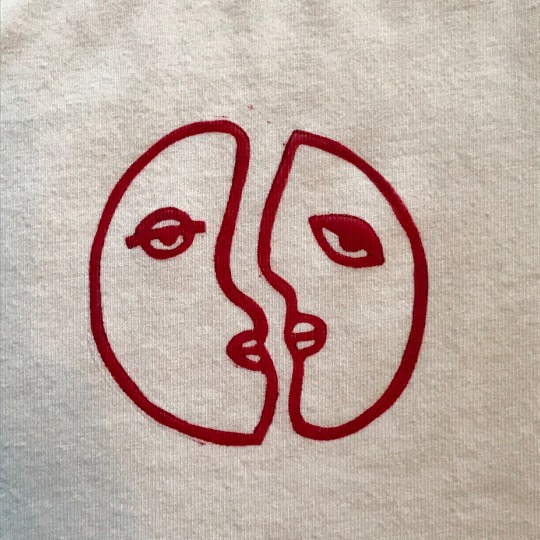
Origin of Love faces on pink and white fabric
See more on my Instagram: @hannahwich.art
52 notes
·
View notes
Text
I'm Gay - Eugene Lee Yang
EXECUTIVE PRODUCED by 2ND TRY Co-produced by EVERYBODYNEEDSUS http://everybodyneedsus.com/ Executive Producer - Cathleen Cher Producer - Sally Sujin Oh Director of Photography - Adam Lee Production Designer - Matt Soko Editor - Jonas Thorhallsson Colorist - Jakob Thorhallsson
https://www.youtube.com/watch?v=qpipLfMiaYU
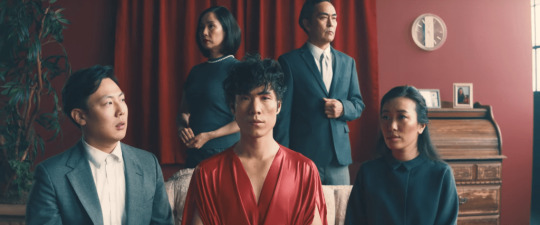

1 note
·
View note
